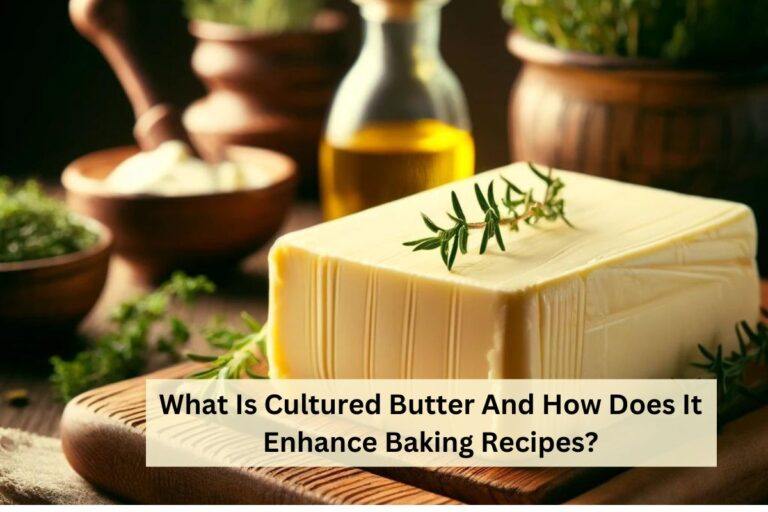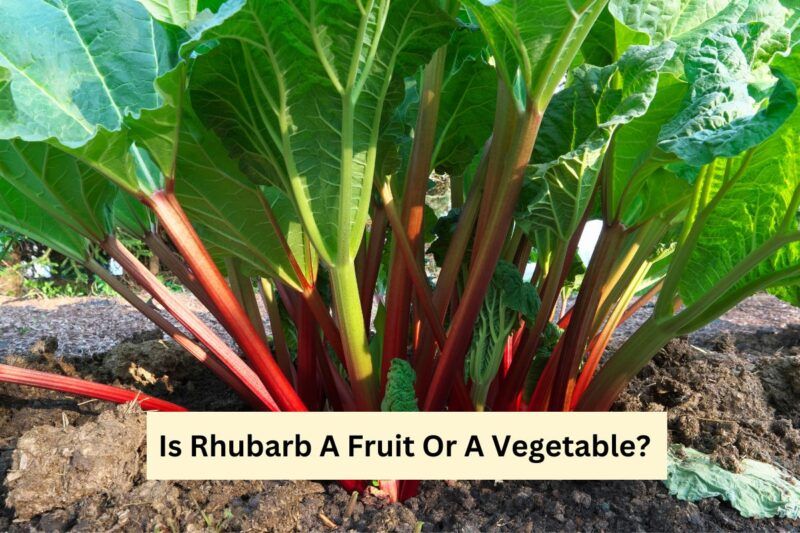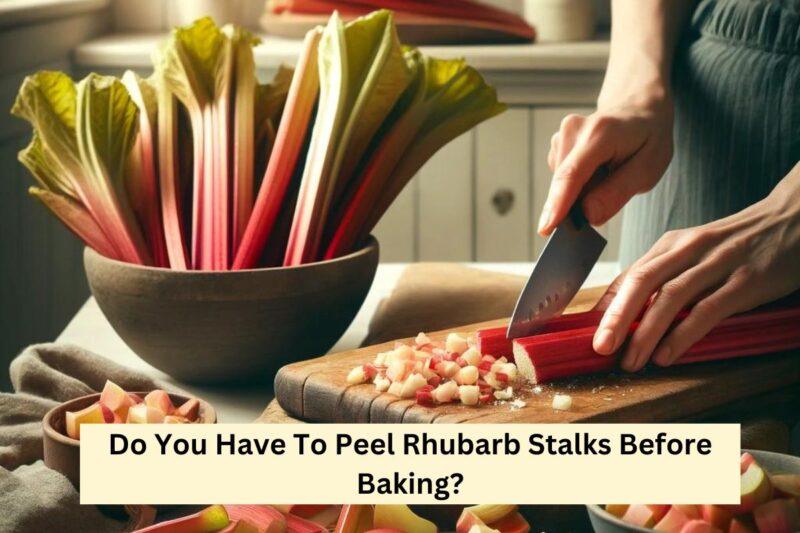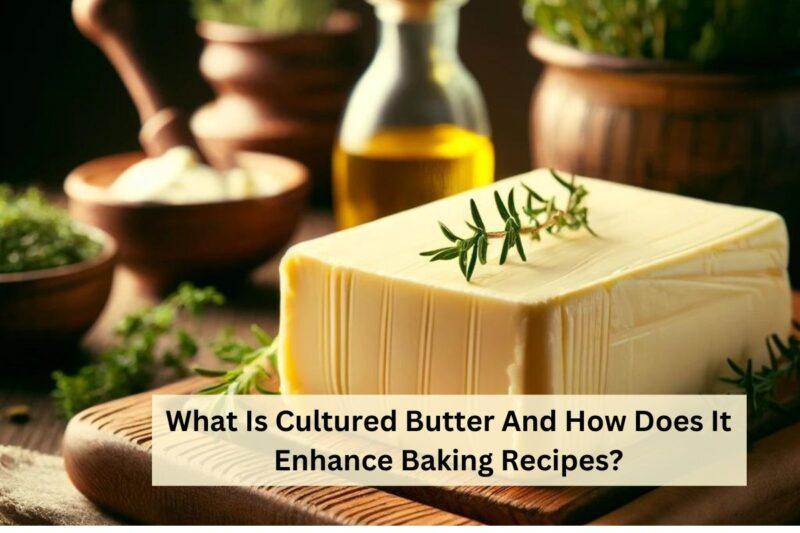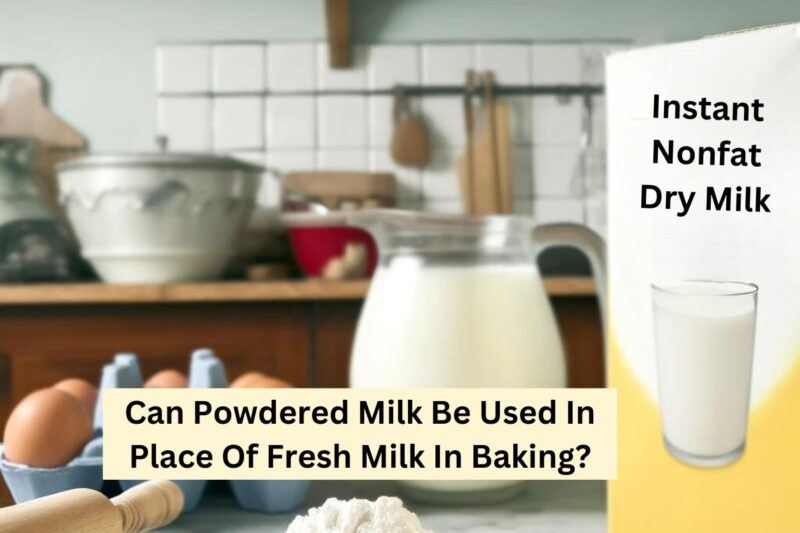- Definition of Cultured Butter: Explain what cultured butter is, including how it is made and what differentiates it from regular butter.
- Taste and Texture Enhancements: Describe the rich taste and creamy texture of cultured butter and how it enhances the flavor profiles of baked goods.
- Chemical and Physical Benefits: Discuss the chemical reactions that occur when using cultured butter in baking, such as improved leavening and tender textures.
- Nutritional Benefits: Outline any nutritional advantages cultured butter may have over traditional butter.
- Baker’s Preference: Explore why many professional bakers prefer cultured butter for certain recipes.
Cultured butter might sound fancy, but it’s quite simple. It starts its life just like any other butter but with a twist during its making process. To make cultured butter, cream is first fermented with live bacteria. This step is similar to how yogurt is made. After fermenting, the cream thickens slightly and develops a tangy flavor that sets cultured butter apart from regular butter.
The idea of adding bacteria to cream might seem a bit odd, but it’s a traditional technique that dates back hundreds of years in Europe. This process not only enhances the flavor but also alters the butter’s texture, making it richer and creamier. Why does this matter for baking? Well, this extra creaminess and rich flavor can make your baked goods taste even better.
Most of the cultured butter you’ll find today still follows these traditional methods, ensuring that every slab you buy brings a bit of European baking tradition right into your kitchen. Whether spread on a fresh piece of bread or melted into a batch of cookies, cultured butter can elevate simple recipes with its deep, complex flavors.
Cultured Butter in Baking
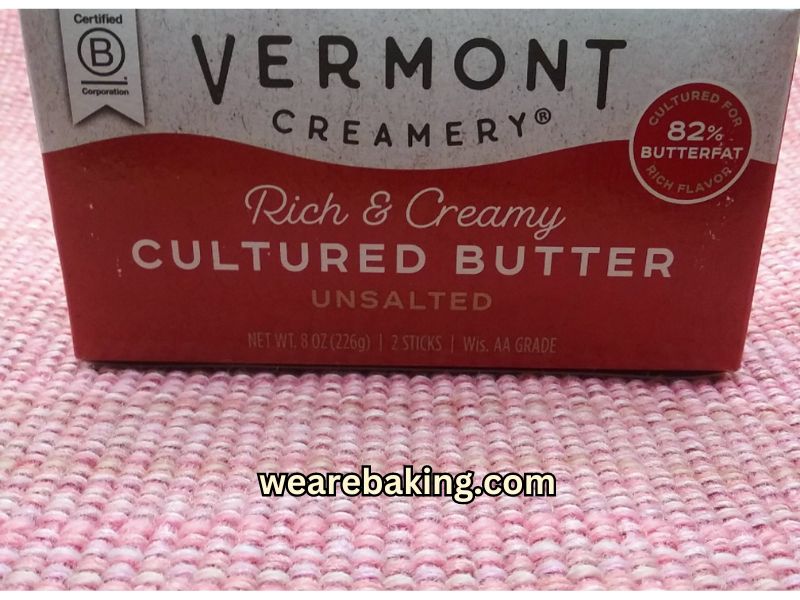
Cultured butter brings a unique twist to your baking. It’s richer and tangier than regular butter, which means it adds more than just moisture to your recipes—it enhances the flavors.
The tang of cultured butter pairs well with the sweetness in baked goods, enriching the overall taste. It can make simple recipes like pie crusts and cookies stand out with a deeper, more interesting flavor.
Cultured butter typically contains more fat than regular butter. This extra fat helps make your cakes moister and your pastries flakier by reducing gluten formation. Gluten can make baked goods tough, so less gluten means softer, more tender textures.
While cultured butter can be used in any baking recipe, it shines in baked goods where butter plays a starring role. Butter cakes, croissants, and puff pastries are perfect examples. Using cultured butter in these recipes enhances both their flavor and texture significantly.
How Cultured Butter Changes the Taste and Feel of Baked Goods

Cultured butter does more than add flavor to your baking; it makes everything taste and feel better. Here’s how:
Cultured butter goes through a special process that makes it taste creamy and tangy. This rich flavor makes things like cookies and cakes taste even better, giving a little extra something to each bite.
It also has more fat, which makes pastries and pie crusts softer and flakier and makes cakes and muffins feel smooth and rich.
Cultured butter helps keep baked goods moist. Cakes and breads will not dry out quickly and will stay yummy for longer.
While it’s best in recipes where you can really taste the butter, such as butter cakes or pastries, you can use cultured butter in almost any baking recipe. It can make even simple recipes feel a bit more special.
Nutritional Profile
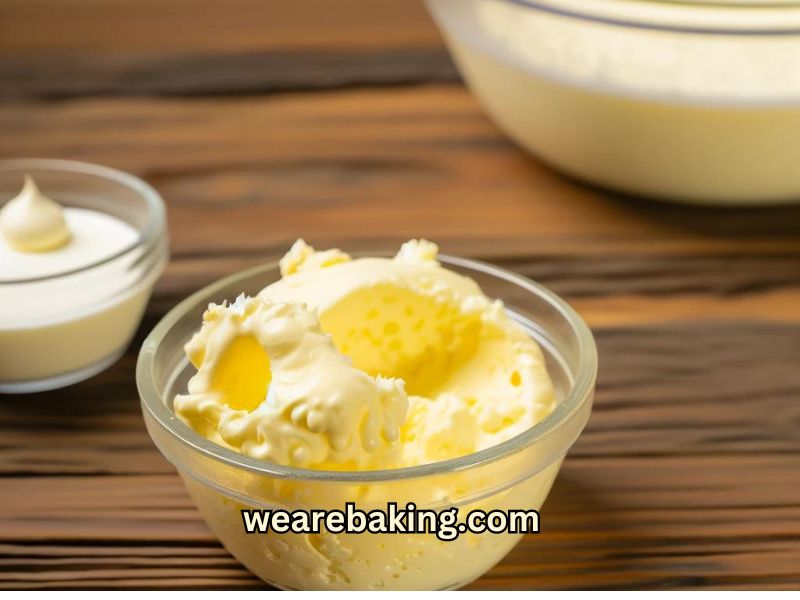
Cultured butter isn’t just good for your baking; it has some interesting nutritional benefits too. Here’s what makes it a bit different from regular butter:
- Higher in Fat, but Good Fat: Cultured butter often has a slightly higher fat content than regular butter. This fat is mostly saturated, which you might need to moderate, but it also contains some heart-healthy fats. These can be beneficial when consumed in reasonable amounts.
- Rich in Vitamins: Cultured butter is a good source of fat-soluble vitamins, such as Vitamin A, which is important for vision and immune function, and Vitamin E, an antioxidant that helps protect cells.
- Contains Probiotics: Depending on the brand and how it’s made, some cultured butters contain probiotics—similar to those found in yogurt. Probiotics are good bacteria that can help maintain a healthy digestive system.
- Calorie Considerations: While cultured butter is richer and offers unique flavors, it’s also higher in calories. It’s a good idea to use it thoughtfully, especially if you’re watching your calorie intake.
🧈 Nutritional Facts of Cultured Butter 🧈 |
|
|---|---|
| Calories | 717 per 100g |
| Total Fat | 81g per 100g |
| Saturated Fat | 51g per 100g |
| Cholesterol | 215mg per 100g |
| Vitamins | Vitamin A, D, E, K |
| Brought to You by “wearebaking.com” | |
Adding cultured butter into your diet can offer more than just taste benefits—it can also contribute to your nutrient intake. As with any dietary choice, the key is balance and moderation.
Tips for Using Cultured Butter in Baking

Cultured butter can really improve baking. It adds a deep flavor and creamy feel that can make baked treats even better. Here are some easy tips to help you use cultured butter effectively in your recipes.
- Remove the cultured butter from the fridge about an hour before you start baking. Soft butter is easier to mix thoroughly with other ingredients, which is important for even-textured doughs and batters.
- Because cultured butter has more fat, measuring it correctly is very important. Use a kitchen scale if you can. This helps ensure your recipes turn out just right, balancing the richer taste and texture.
- When mixing cultured butter into your batter or dough, do it gently to avoid overworking the mixture. This is especially important in recipes like cakes and pastries, where a light, delicate texture is desired.
- Keep your cultured butter wrapped tightly in its original packaging or in an airtight container in the fridge. If you won’t use it soon, you can freeze it to preserve its flavor and freshness.
- Try cultured butter in different recipes to see how it affects taste and texture. From cookies to cakes to breads, experimenting will help you see where cultured butter makes the biggest difference.
Cost and Where to Find It

Cultured butter can make your baking better, but it might cost more and be harder to find than regular butter. Here’s what you need to know:
Cultured butter can be found at big grocery stores, specialty food shops, and farmers’ markets. It’s more common in Europe, but more shops around the world are starting to sell it because people like its taste and texture. My local grocery store doesn’t carry cultured butter, but I can find it at Walmart.
Cultured butter usually costs a bit more than regular butter. This is because it takes more time and better ingredients to make it. The price can change a lot depending on where it comes from.
If you use cultured butter often, try to buy it when it’s on sale or in large amounts. Sometimes, stores lower the price of dairy products when they are close to the date they should be sold. This is a good time to buy a lot and freeze it for later.
If you like trying new things in the kitchen, you could try making cultured butter at home. You need cream and something to start the culture, like buttermilk. It takes some time to let the cream ferment before you turn it into butter, but it can save you money and be a fun project.
Knowing these things can help you decide if using cultured butter is right for your budget and baking needs. It can improve your dishes, but think about the cost and effort it takes.
Frequently Asked Questions
Can cultured butter be used in vegan baking?
Cultured butter is made from cream, which is a dairy product, so it is not suitable for vegan baking. However, there are vegan alternatives that mimic the tangy flavor of cultured butter using plant-based ingredients.
How long can I store cultured butter?
Cultured butter can be stored in the refrigerator for up to a month. For longer storage, you can freeze it for up to six months. Make sure it’s wrapped tightly in its original packaging or in an airtight container to maintain its flavor and texture.
Does cultured butter taste very different from regular butter?
Yes, cultured butter typically has a more pronounced flavor—it’s richer and slightly tangier than regular butter. This distinctive taste is due to the fermentation process, which develops deeper flavor notes.
Is there a noticeable difference in baking with cultured butter versus regular butter?
Many bakers find that cultured butter enhances the flavor of baked goods, making them taste richer and more complex. The higher fat content also improves the texture, making pastries flakier and cakes more moist.
Are there any special considerations for cooking with cultured butter?
Cultured butter has a lower smoke point than regular butter due to its higher fat content, so it’s best used in baking or low-heat cooking to prevent burning. Its rich flavor also makes it excellent for finishing dishes, like drizzling over vegetables or melting into sauces.
Final Thoughts

Cultured butter is a simple change that can improve your baking. It adds a rich flavor and creamy feel to everything you make, from cakes and cookies to pastries. Whether you’re a professional baker or a home cook, adding cultured butter to your recipes is an easy way to elevate the taste and quality of your baked goods. If you want to add a special touch to your baking, cultured butter could be just the thing.
Have you tried cultured butter in your baking? Leave me a comment below.
And As Always
Keep On Baking!
Taianne
Share the Love
Latest Posts

I’m Taianne, the owner and operator behind We Are Baking. Baking my first cake at age 11 hooked me on creating sweet treats. Though my interest faded during childhood, it was rekindled when I married my apple pie-loving husband. I love trying new recipes, tweaking classics, and helping others learn the science and art of baking. I started We Are Baking to share tips, tricks, and favorite recipes I’ve discovered over the years. When not in the kitchen, I enjoy spending time with family and friends. My goal is to inspire others to embrace their creativity through baking. Feel free to contact me with any questions!
Taianne@wearebaking.com

